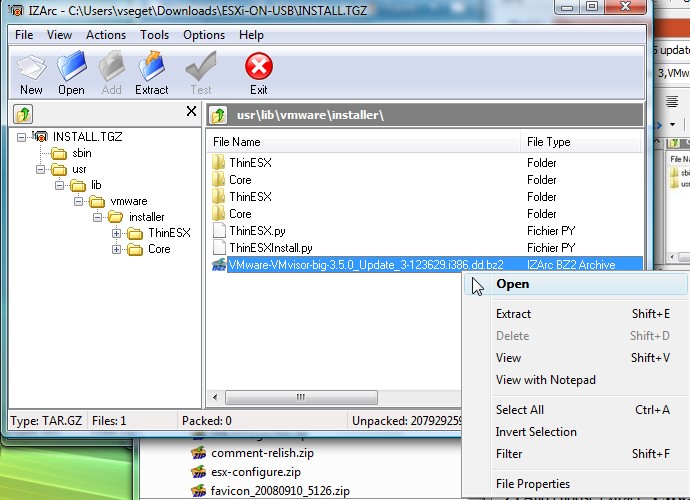
The ESXi installer running off the bootable USB pen drive Steps 2 to 5 are reproduced in the following video. We do this by creating two folders under root and using the mount command to create the mount points, like so.
Esxi install from usb syslinux efi iso#
Next, we create two mount points, one for the USB drive and another for the ESXi ISO we’ll mount in the next step. usr/bin/syslinux /dev/sdc1Ĭat /usr/share/syslinux/mbr.bin > /dev/sdc Again, the location of Syslinux may differ according to the version of syslinux installed and the Linux distro used. We also need to copy mbr.bin, the file containing the boot code, to the USB drive. To make the USB drive bootable, the syslinux utility is used. The -n USBESXi bit is used to label the USB drive and can be omitted. We also need to format the partition (sdc1 in this case). Remember that you’re drive may differ from mine (sdc). sbin/mkfs.vfat -F 32 -n USBESXi /dev/sdc1 To format the USB drive, run the following command. This allows us to copy the bootloader file as well as the ESXi binaries. The partition just created must be formatted with the file system specified.

As always, I’m sticking to my CentOS 7 VM. A Linux virtual or physical machine running most Linux distros should do.

If you are strictly a Linux user or prefer using Linux based methods instead, then read on since today we’ll be doing just that, creating a bootable USB pen drive with the ESXi installer on it using only Linux commands.
Esxi install from usb syslinux efi how to#
In How to install vSphere ESXi on a bare metal server, I describe how software such as Rufus can help you create bootable ESXi media using Windows. Running the ESXi installer from a bootable USB flash drive or memory stick is a very useful method you can use to install VMware’s hypervisor.


 0 kommentar(er)
0 kommentar(er)
